When you think of animals and venoms, your first thought is probably snakes. You wouldn’t be wrong! There are around 600 species of venomous snakes with about 200 being able to seriously hurt or even kill humans.
We don’t hold any of these snakes at Wingham anymore. However, we do still have our venomous lizards, the Gila Monsters, and Beaded Lizards, which I will talk more about later.
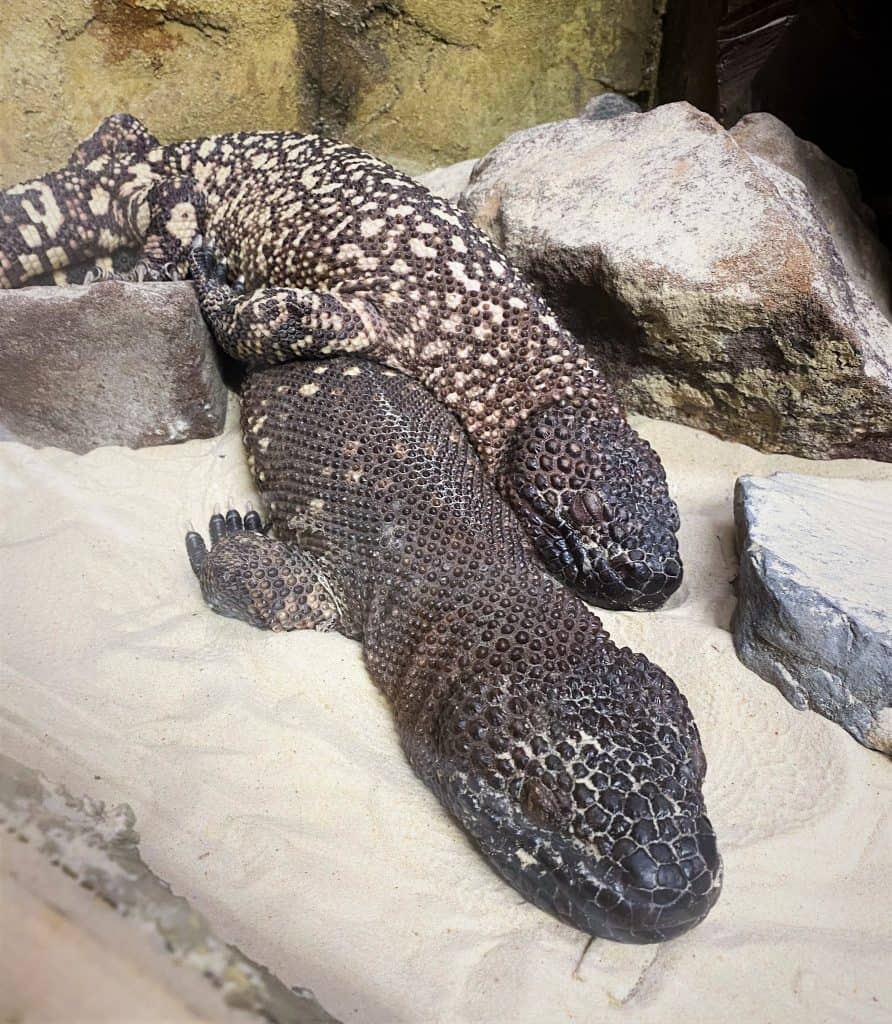
BIAZA’s Vital Venoms and Practical Poisons Week
So why am I writing about venomous and poisonous animals? This week BIAZA are celebrating all things venomous and poisonous, highlighting species which you may not know have toxins within their bodies that help with everyday life. The aim is to raise awareness on how this works, whilst dispelling some myths around these species.
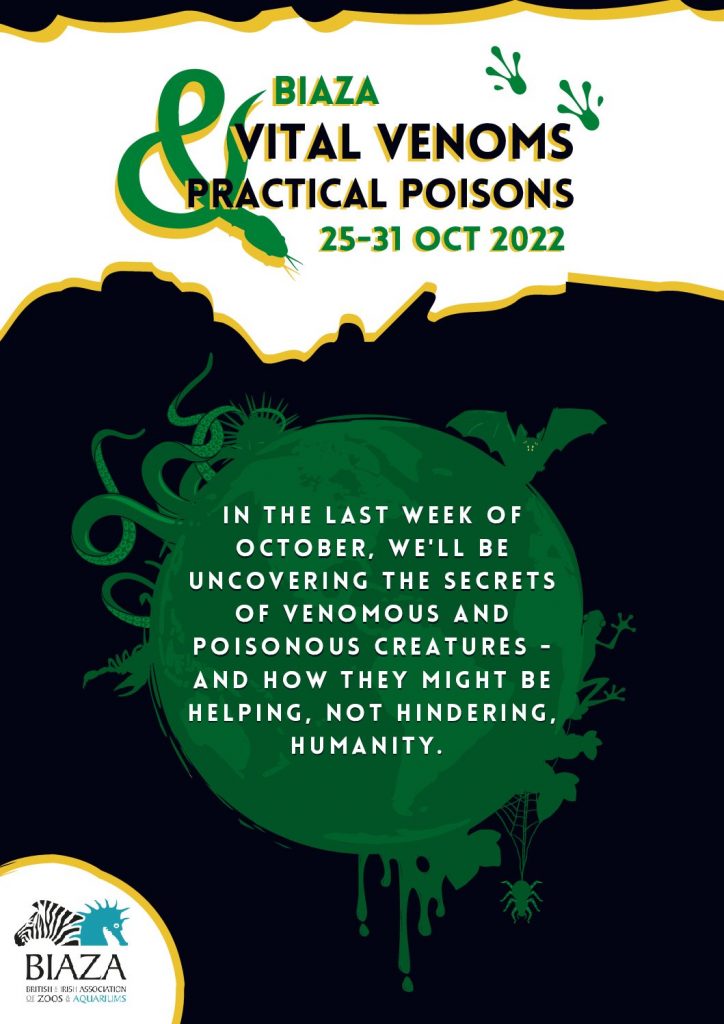
Venoms in medicine
You may not know that these toxins are also helping humans today within the medical field. There is a vast amount of research being carried out with venoms and poisons to see how they can help human diseases and conditions such as chronic pain, diabetes, cancer and even strokes.
Currently there are 7 commercial drugs which use components from animal venoms. You might even use some of these drugs yourself without knowing the vital role that venom plays within your treatment. A few examples of these drugs are Ziconotide/Prialt®, AstraZeneca, which helps treat chronic pain. This drug uses toxins from a cone snail. Whilst Exenatide/Byetta®, AstraZeneca which helps with type 2 diabetes uses a synthetic version of Gila Monster venom.
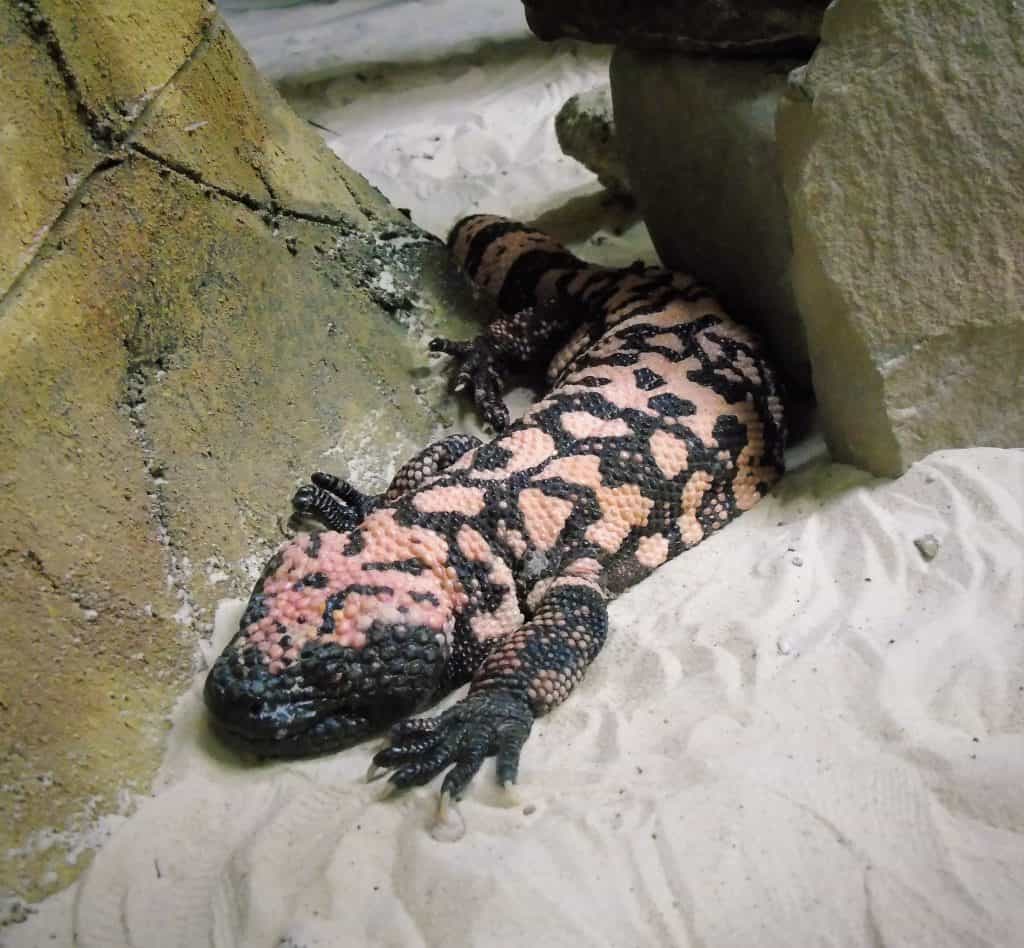
There’s a multitude of functions that venom helps animals with, not just in our lives but in these species’ everyday life.
How do animals use their venom?
Venom isn’t just about killing or paralyzing the animal’s food. Venom can help moles, shrews and parasitoid wasps to preserve their food longer. It can aid with pre-digestion for sea anemones, centipedes and assassin bugs.
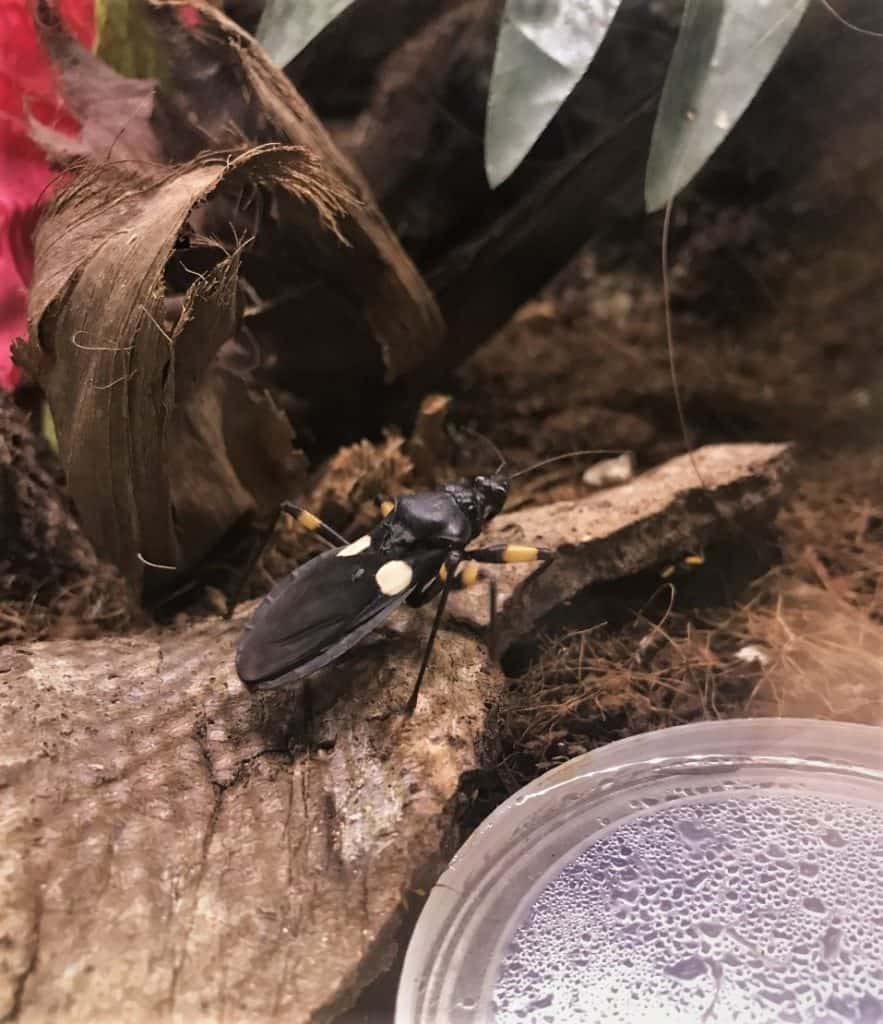
Slow loris use their venomous excretions from their glands in their arm pits as an ectoparasite deterrent. Rattlesnakes will use their venom to not only incapacitate or kill their food, but as a prey tracker. They follow the scent of the venom which they have injected into their prey. Around 20 species of scorpions even use their venom to help with mating in a process. This is known as “sexual stinging”, where the male will inject the female with his stinger before or during the courtship dance.
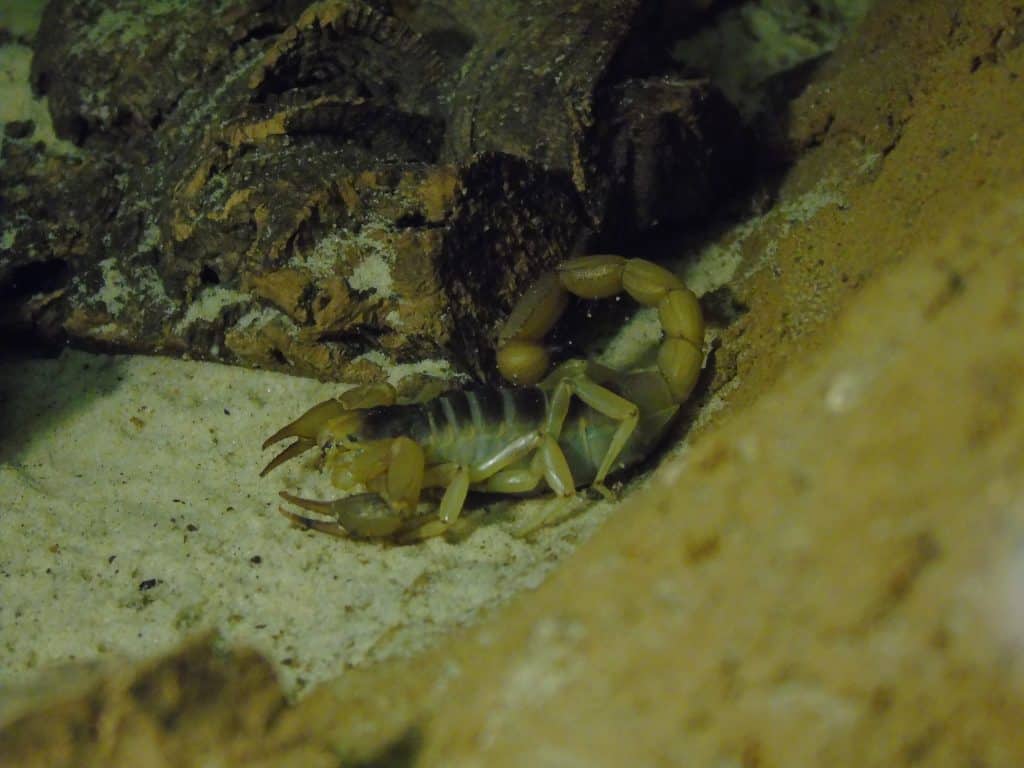
So here at Wingham, which species of animals do we hold which are venomous?
Wingham’s venomous lizards, the Gila Monsters and Beaded Lizards are what first spring to mind.
Both of these species are very unlikely to kill humans, as they are both quite sluggish making them easily avoidable. Unlike venomous snakes with their powerful fangs which inject venom into their target when bitten, these lizards need to chew their prey to get their venom flowing. These lizards produce their venom from glands under their jaw. This then pumps the liquid up through two grooves in their lower back teeth to get chewed into their prey. YouTuber and TV presenter, Coyote Peterson described the Gila Monsters bite as “hot lava coursing through your veins” and “the worst pain (he) had ever experienced”. Gila Monsters venom is regarded as the most painful venom produced by any vertebrate species.
In our bug house we have around 20 species of venomous invertebrates. These include our Giant Vietnamese Centipede, Assassin Bugs and all our tarantula and scorpion species. The species which we would consider one of the more dangerous species to work with would be our Gooty Oranamental Tarantula and centipedes.
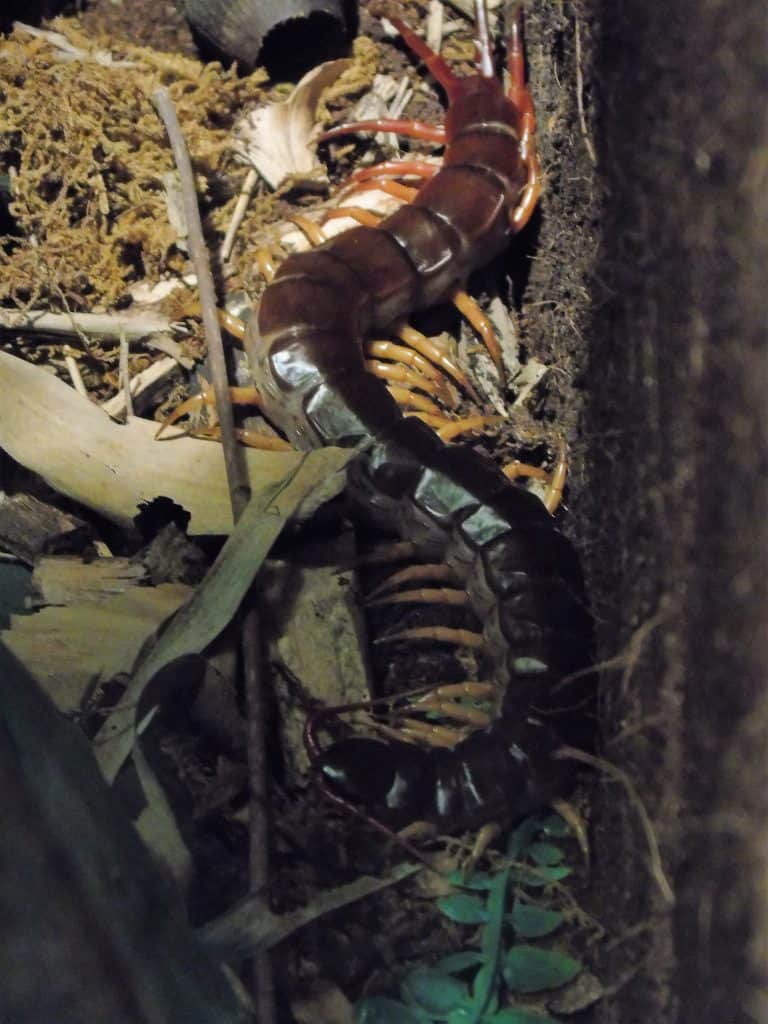
Both species are incredibly fast and aggressive with very painful bites if you were to be bitten. So, keepers need to work extremely diligently with these species.
In our Reptile House we also have our Cane Toads which are considered poisonous. This species of amphibian secretes a toxic poison from the large glands situated on either side of their heads. Cane Toads are famous for being an invasive species in Australia. They have decimated the local ecological system because they do not have any natural predators that can withstand their toxin. They are extremely poisonous to dogs, with people in Australia now training their dogs to not pick them up.
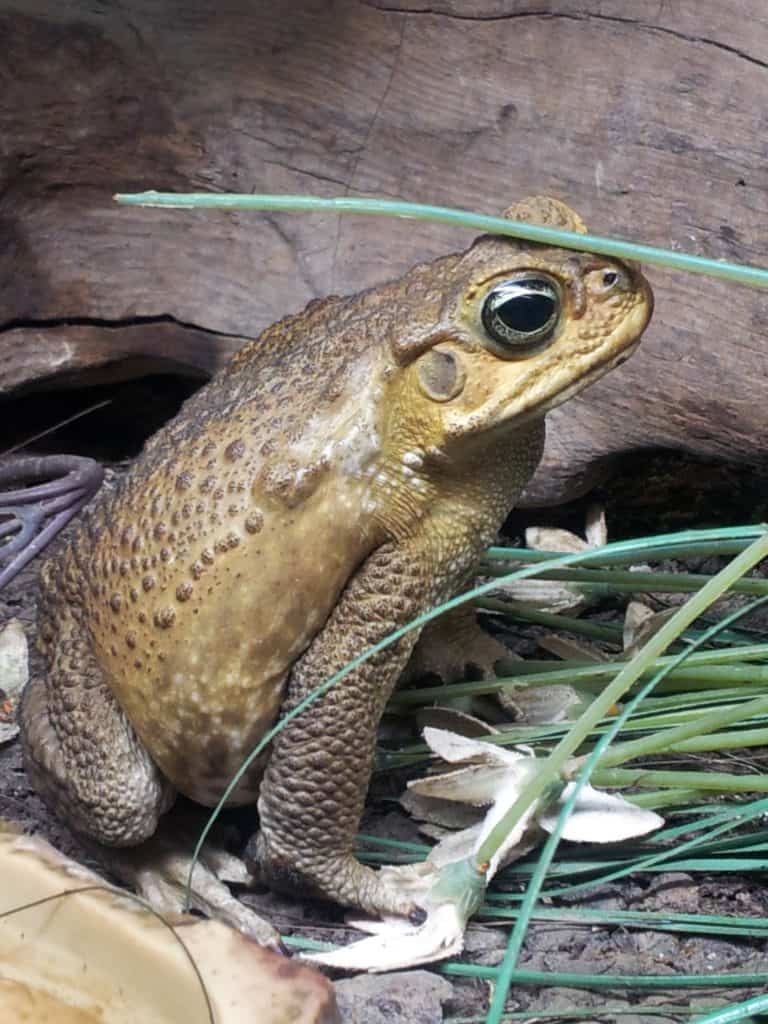
What is the difference between venom and poison?
The simple answer is how does it enter your body?
Dr Ronald Jenner from the museum of Natural History in London describes the difference as:
‘If you bite it and you die, it’s poison, but if it bites you and you die, that’s venom. The hallmark of venom is that it’s introduced via a wound. It can be injected through several means, including teeth, a sting, spines or claws. Poison is different as there is no wound involved. It can be absorbed into the bloodstream through the skin, inhaled or ingested’.
Dr Ronald Jenner, Bite or be bitten: what is the difference between poison and venom? | Natural History Museum (nhm.ac.uk)
There are so many applications for how animal and plant toxins can be used that we can’t wait to see what the future holds for this type of research. Hopefully, this will be a catalyst in the future for helping to preserve and conserve these amazing species.


